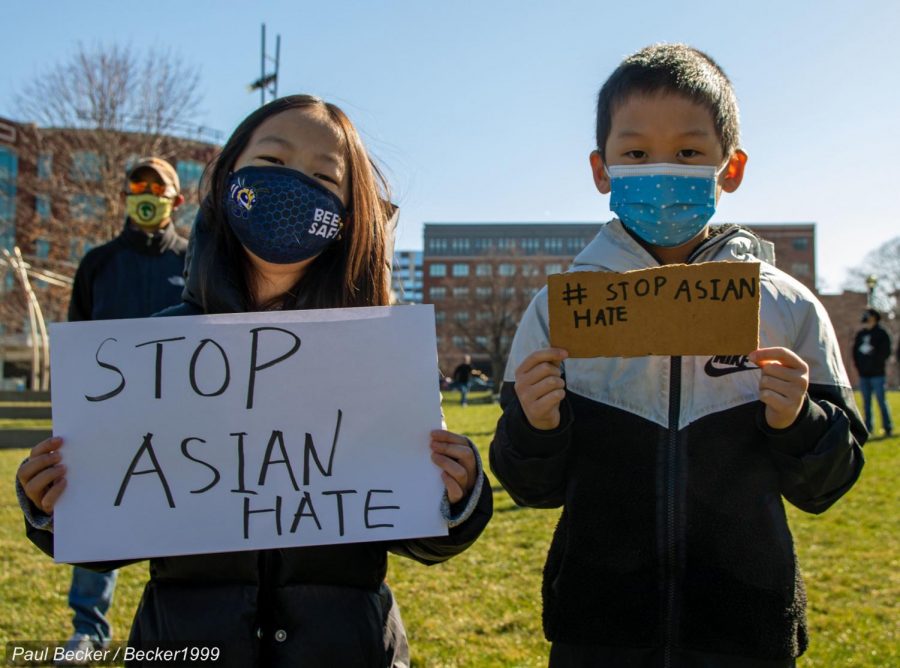On the Subject of Hate Crimes
April 24, 2021
The Senate passed a bill on Thursday to protect Asians against a rise in hate crimes, and it will go before the House before Biden can sign it into law.
The United States has a long and ugly history when it comes to Asian-Americans, like most other minority groups. From the Chinese Exclusion Act to Japanese internment camps, our track record hasn’t been the best as a country.
But discrimination against Asians is not a thing of the past. In recent news, just March, an Atlanta man went on a shooting spree, killing eight people across three spas. Six of the eight people murdered were Asian women. And this isn’t just a one-off occurrence. Over the last year alone, nearly 3,800 instances of Asian specific discrimination were reported, and Asian women once again make up a majority of this data, almost seventy percent.
In light of the pandemic, violence against Asian-Americans has skyrocketed. As with any tragedy, people search for a scapegoat. Last year in April, a man in Texas attacked a Burmese family with a knife. The reason? He believed they were a Chinese family spreading Coronavirus. The worsening of the pandemic has only exacerbated the extremity of this situation and caused a rise in scapegoating and fear-mongering.
In January, eighty-four-year-old man Vicha Ratanapakdee was assaulted on his morning walk in San Francisco. Surveillance caught a young man running at him full speed, and slamming his body to the ground. Ratanapakdee died two days later of his injuries.
In Oakland’s Chinatown, a ninety-one year old man was hospitalized by being shoved by a man who came up behind him. Also in Chinatown, a fifty-two-year-old woman was shot in the head with a flare gun.
Emily Duong, a Bob Jones student said, “As an Asian-American, I feel very, very unsettled and revolted about the things happening to people the same race as me. Though nothing has happened in our community, I still feel fear for those in communities not too far from us.”
In a poll, 84.8% of Bob Jones students said that they believed hate crimes exist, in the sense that hate crimes are a real issue. The other 15.2% said that they felt like what counted as a hate crime was dependent on the situation. But what constitutes a hate crime? In the simplest terms, a hate crime is a crime motivated by hate. To put it more complexly, a hate crime is a crime plus a motivation based on bias or prejudice. This is different from a hate/bias incident, an act of prejudice that does not include violence, threats, or property damage and is not a crime.
But, despite crime being in the title, it is rare for there to be much legal action against reported incidents. Most hate crimes are prosecuted on the state level, and each state has its own guidelines. In addition, four states –Arkansas, Indiana, South Carolina, and Wyoming – don’t have any hate crime laws at all. To top it all off, reliable hate crime data is hard to come by. The data published by the FBI only accounts for offenses reported by the police, and there is no estimation done for missing data.
The data for just how many hate crimes are committed each year vary greatly, due to the differences in methodologies and standards they are measured by. For example, in 2019 the FBI reported approximately 7,300 hate crime incidents, with approximately 8,800 victims. In 2017, the Bureau of Justice Statistics (BJS) reported an estimated 198,000 hate crimes.
So why the difference? Well, as previously mentioned, the FBI bases their data off of reports from law enforcement. This means only cases where law enforcement has concluded there was a sufficient amount of evidence for an incident to be ruled a hate crime and reported it to the FBI’s Hate Crime Statistics Program. On the other hand, the BJS aims to give a rough estimate of total victimizations each year, even ones not reported to law enforcement agencies.
And the FBI’s method of reporting has drawn a good deal of criticism, with accusations of underreporting by participating law enforcement, and there is data to back this up. A large portion of the law enforcement agencies reports zero hate crimes for a given period, in direct contrast to self-reported figures by communities often the targets of hate crimes. One study was done from a sample of assault incident reports taken from seven law enforcement agencies that were not classified as hate crimes, with the goal of determining if there was a clear indication of bias in the incident. When there was one, the incident was labeled ‘bias motivated’, cases where there was a potential for bias but there was also evidence for another motive or triggering event were labeled ‘ambiguous’. The study found that in bias-motivated and ambiguous incidents, anywhere from zero to 8% of cases had been misclassified. When only bias-motivated cases were considered, that range shrunk to zero to 3%. If these numbers were applied nationwide, it would mean thousands of unreported cases.
And even still, hate crimes are underreported on the level of the victim. Data from the NCVS shows that half of hate crime victimizations from 2013 to 2017 were not reported to law enforcement. There are many reasons for this, from fear of retaliation to distrust of law enforcement to embarrassment they were victimized.
Behind every single statistic listed in this article, there is a person with a story to be told. The question is: will they ever get the chance to tell it?


